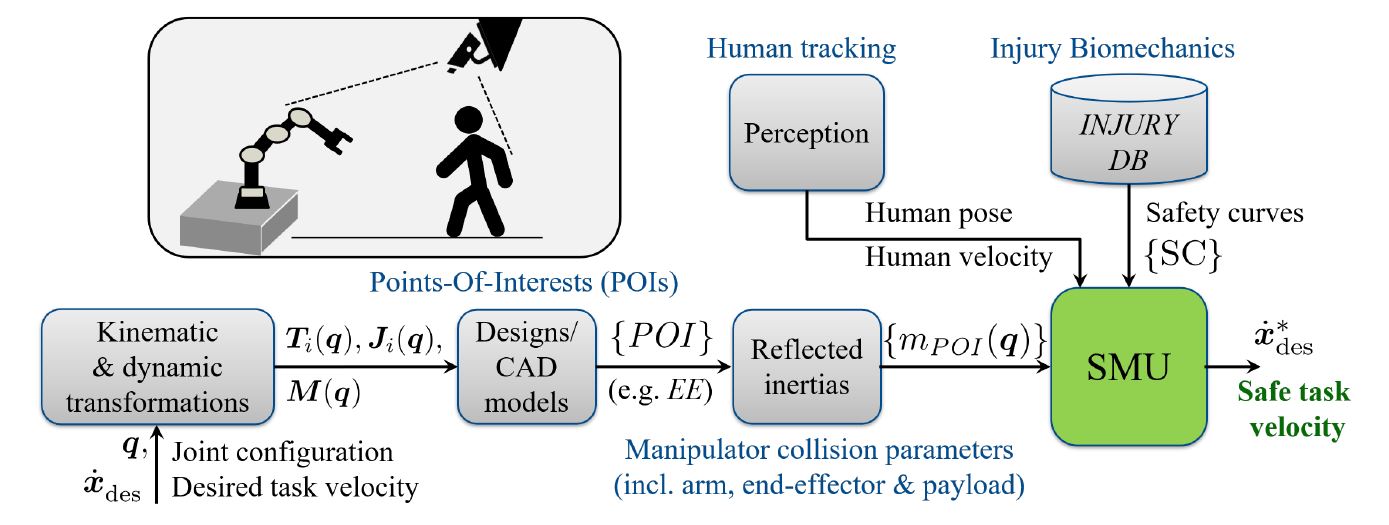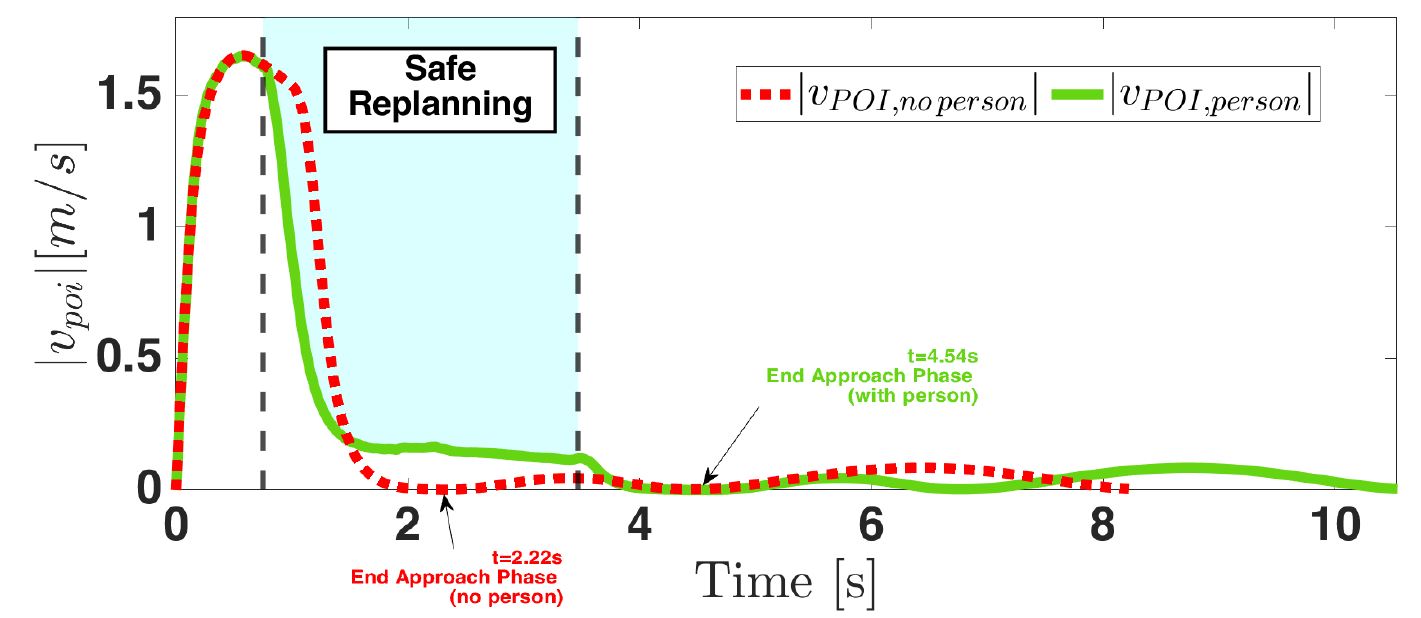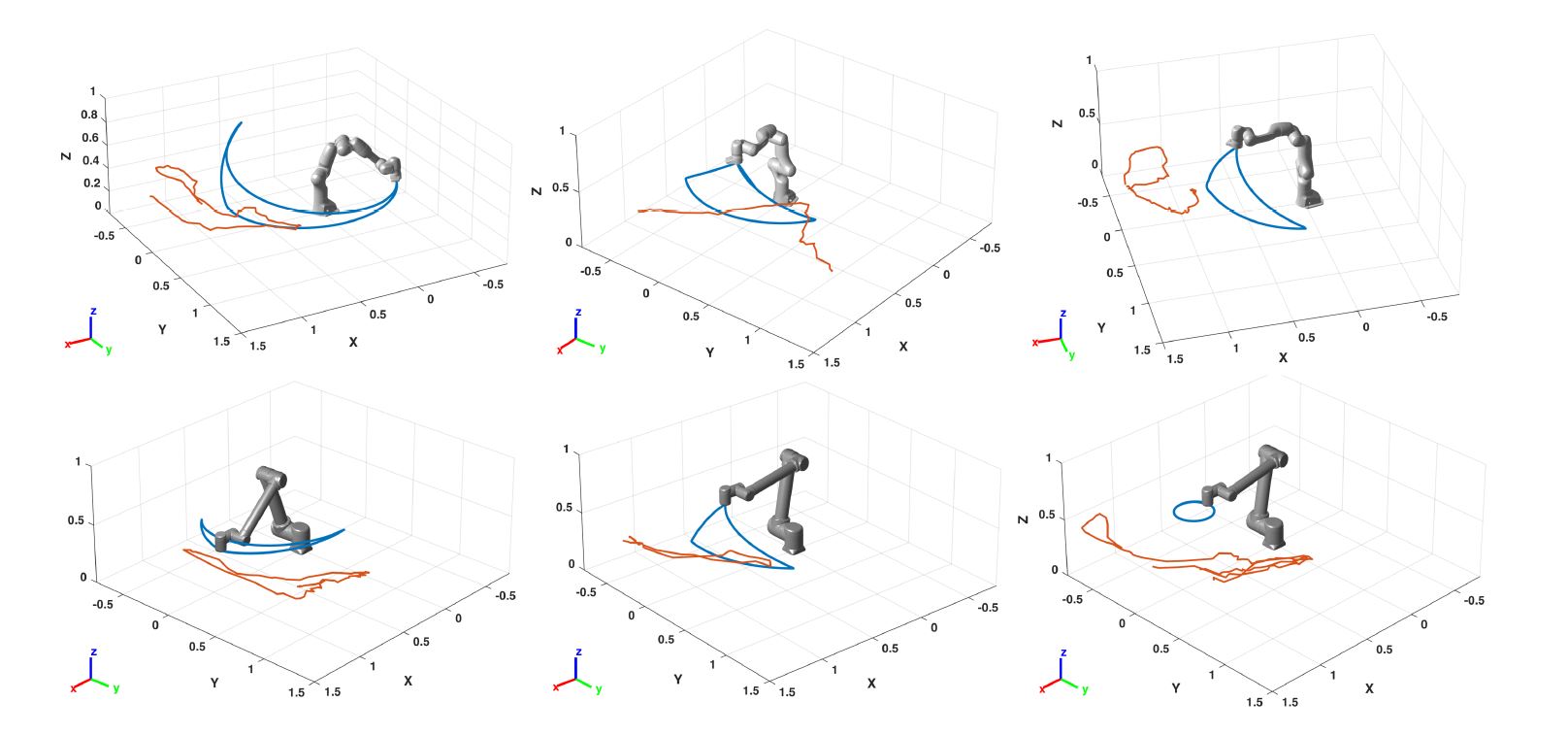
Block diagram of the proposed discrete time fast and safe trajectory planning framework. At every cycle, based on the information about the human position and speed and the current plan, safety is possibly ensured by replanning the time evolution of the robot motion along the path.

The Safe Motion Unit (SMU) pipeline. This injury biomechanics-based approach ensures human safety for robot manipulators during pHRI.

Trajectory without (top) and with (bottom) the human operator.

Example of human body keypoints detection using OpenPose and corresponding 3D position of the chest.

Speed profile for the robot POI when the person is present (green solid line) and when is not present (red dashed line). The area highlighted represents the interval where the safe replanning procedure is performed.

Examples of trajectories and human motions.
